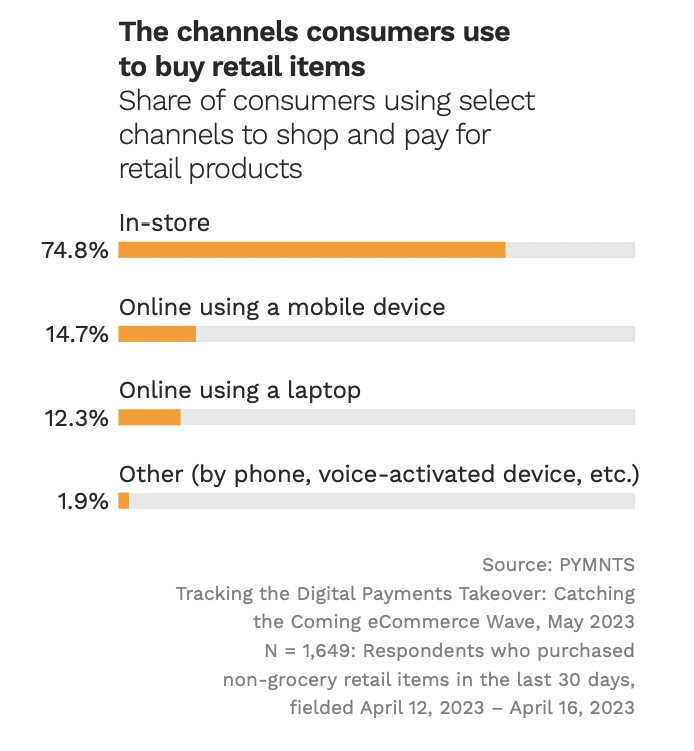
Despite advancements in voice commerce, the technology still faces challenges driving penetration in the retail sector.

PYMNTS Intelligence’s study last April, “Tracking the Digital Payments Takeover: Catching the Coming eCommerce Wave” drew from a survey of nearly 2,700 U.S. consumers to understand how they are making their digital purchases, among other matters.
The results revealed that while three-quarters of consumers shop and pay for retail purchases in stores, 15% online using a mobile device, and 12% online using a laptop, only 2% of consumers do so via other channels, such as phone or voice-activated device.
There could be several reasons for this relatively low penetration.
Voice-activated devices may have limited functionality or compatibility with certain eCommerce platforms, making it less convenient for consumers to use them for purchases.
Additionally, some consumers may simply not be aware of the option to make purchases using voice-activated devices or may not be familiar with how to use them for this purpose.
Plus, voice-activated purchasing experiences may not be as seamless or user-friendly as other methods yet, leading consumers to prefer more developed channels for making purchases.
Consumers have been burned before.
“[When voice AI first started,] consumers wanted to have those sci-fi-style, open-ended conversations [with robots], and many were disappointed because the tools at that time could only play music, set timers, tell you the weather,” Keyvan Mohajer, CEO and co-founder of conversational intelligence platform SoundHound, told PYMNTS’ Karen Webster in an interview last year.
He added that these limited “utility occasions” had the unfortunate side effect of causing consumers to lower their expectations around voice AI applications. Yet, he contended, the technology is finally able to provide consumers with the first promising glimpses of a truly open-ended conversational experience.
One of the key sites of voice commerce innovation is within consumers’ vehicles, through their cars’ digital interfaces, as Ingo Payments CEO Drew Edwards noted in an interview last year with Webster.
“Apple CarPlay and Google [Android Auto] have taken most functions away from the driver and turned them into voice commands,” he said. “There has got to be some element of intelligence built into that because there’s a dialogue that goes on” as consumers are alerted to, consider and ultimately transact across a range of interactions and experiences.
For all PYMNTS retail coverage, subscribe to the daily Retail Newsletter.